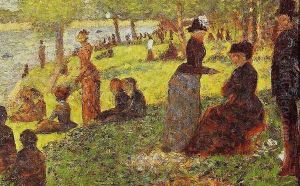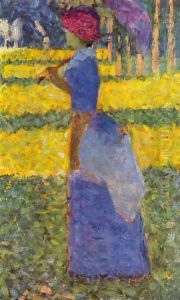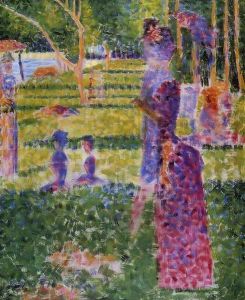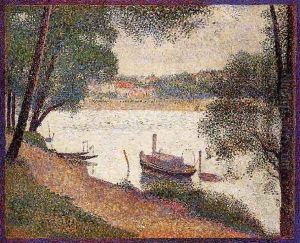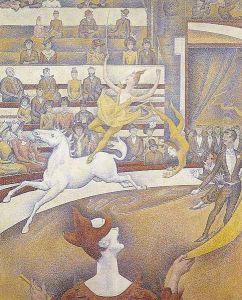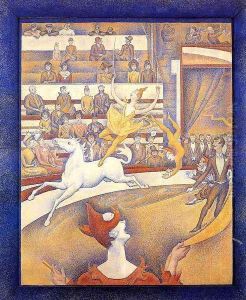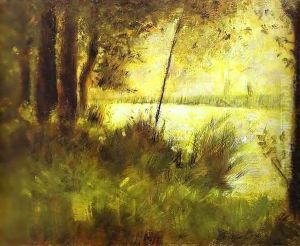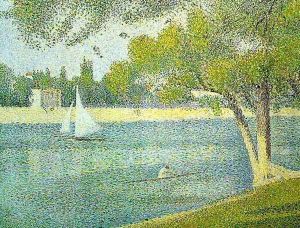Georges Seurat Paintings
Georges Seurat was a French post-Impressionist artist known for pioneering the technique of Pointillism, a method of painting in which small, distinct dots of color are applied in patterns to form an image. Born on December 2, 1859, in Paris, France, Seurat was raised in a wealthy family which supported his early interest in art. He studied at the École des Beaux-Arts in Paris in 1878 and 1879, where he was influenced by the scientific theories of color and contrast. His early works were influenced by the Impressionist movement, but Seurat quickly moved beyond it to develop his unique style.
Seurat's most famous work, 'A Sunday Afternoon on the Island of La Grande Jatte', completed in 1886, is a large canvas that epitomizes the technique of Pointillism and remains one of the icons of 19th-century painting. This masterpiece took him two years to complete and illustrates his methodical and scientific approach to art, focusing on the harmony and emotion conveyed through color and light. Seurat's meticulous attention to the optical effects of color and his desire to bring a greater sense of order and structure to the Impressionist approach to painting marked a significant departure from the more spontaneous methods of his predecessors.
Despite his innovative techniques, Seurat's work was not immediately embraced by the art community of his time. However, his ideas and methods significantly influenced the Neo-Impressionist movement and later artists such as Paul Signac and Vincent van Gogh. Seurat was deeply committed to the principles of art and theory, and he wrote essays and journals discussing his methods and artistic philosophy, contributing to the intellectual foundations of modern art.
Tragically, Georges Seurat died on March 29, 1891, at the young age of 31. The cause of his death is still somewhat of a mystery, with theories ranging from diphtheria to meningitis. Despite his short life, Seurat's impact on the art world was profound. He left behind a small but significant body of work that continues to be studied and admired for its innovative technique and its beautiful, evocative depiction of modern life. Seurat's legacy endures as a testament to his vision and his contributions to the evolution of modern art.



















